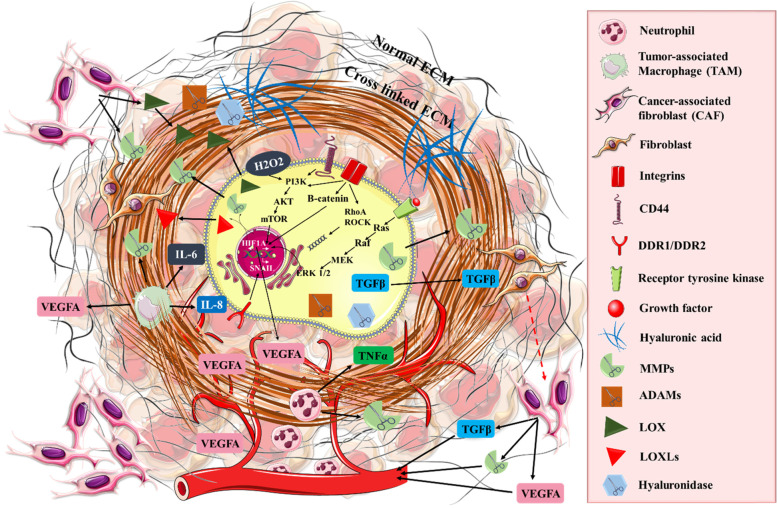Fig. 3.
The role of ECM in the TME. There is a bidirectional communication between the malignant clone and the TME associated cells, which ultimately leads them to increase their secretion of proteases, crosslinkers and soluble cytokines/chemokines. The altered ECM resulting from these changes in cell secretion subsequently has an impact in affecting the malignant clone and the TME. Specifically, it can be observed how the malignant clone can alter the properties of surrounding fibroblasts, transforming them in cancer associated fibroblasts, which, subsequently secrete VEGFA, with important proangiogenic properties. Another important cell that communicates with the malignant clone and has an influence on the ECM is represented by the tumor associated macrophage, which secretes key inflammatory cytokines which indirectly alter the ECM. Added to this, the malignant clone itself is able to secrete matrix metalloproteinases, which affect the structure of the surrounding ECM, making it more appropriate for tumor development

